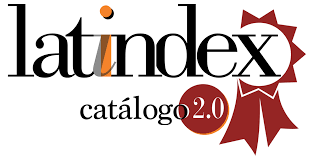Analysis of the Mexican women CEOs' communication style on employees' organizational trust during the COVID-19 pandemic
DOI:
https://doi.org/10.5783/revrrpp.v12i24.788Keywords:
Women, Leadership, internal communication, organizational trust, Covid-19Abstract
This study explores the communication style of Mexican CEOs, through internal communication, on organizational trust during the COVID-19 pandemic, which has lasted more than two years and in which leaders have had to persuade their workers to change or adopt new behaviors, putting organizational trust to the test. The angle of this work focuses on women CEOs in Mexico, where, according to the consulting firm Grant Thornton (2021), only 35% of companies are led by women, who are more likely to have their competence or authority questioned, according to McKinsey (2021). However, the objective of this study is not to make a comparison between the communication styles of male and female CEOs in Mexican companies, nor to evaluate whether through them they generate organizational trust derived from their gender; in this case, we explore the effect generated by the type of communication style used by women in executive management positions to generate trust in their collaborators.
The importance of knowing the communication style used by women executive managers to generate organizational trust is to contribute to understanding how organizational communication and the role of internal communication, specifically, affects employee trust and promotes equitable leadership opportunities for women in organizations. The context in which this research is conducted is also a key element to measure the importance of communication, according to Gallup in its study State of the Global Workplace 2022 Report, burnout or professional burnout syndrome related to the exacerbation of work stress, in which one of the causal elements is the lack of communication between boss and employee, aggravated worldwide with the pandemic by COVID-19.To examine the triad communication style, internal communication and organizational trust, an online survey was administered to 240 employees of two companies led by women. The items were adapted from instruments developed by Richmond and McCroskey (1990) on assertive and responsive communication styles; Mayer and Davis (2007) on organizational trust in leadership; and three questions on internal company communication channels and direct trust in the CEO.
The results of the study indicate that the communication style perceived by employees of companies led by Mexican CEOs is mostly responsive, and that the characteristics "sensitive to others" and "compassionate" stand out in it, which in turn supports their organizational trust. One of the most important findings of the study was that this perception was transmitted through written communication products, that is, through e-mail, leaving virtual meetings or videoconferences in second place.
The context in which this study was developed is crucial to keep in that perspective the results obtained, because although the communication style exercised by the CEOs during the COVID-19 pandemic had an impact on the respondents' trust and 66% of the answers were positive or very positive (i.e., "agree" or "strongly agree"), in the explicit questions about how much they trust their CEO, the percentage indicating "quite a lot" instead of "very much" was slightly higher, this could be explained by the general level of uncertainty.
Finally, among the limitations of the research, it is noteworthy that CEOs were not consulted as to whether the communication style perceived by their employees was indeed the one, they intended to display for their objectives related to organizational trust. In addition, a qualitative study was not conducted to deepen the scope of employees' needs with respect to the communication they perceived from their CEO in terms of organizational trust.
Downloads
References
ALLERT, J. R., Y CHATTERJEE, S. R. (1997). Corporate communication and trust in leadership. Corporate Communications: An International Journal, 2(1), 14-21. https://doi.org/10.1108/eb046530.
BARRETT, D. (2014). Leadership communication (4a ed.). NY: McGraw-Hill Higher Education.
BERGER, B. (2008). Employee/Organizational Communications. Institute for Public Relations. Recuperado el 8 de mayo de 2022, de www.instituteforpr.org/topics/employee-organizational-communications/
DEZSÖ, C.L. Y ROSS, D.G. (2012) Does female representation in top management improve firm performance? A panel data investigation. Strategic Management Journal, 33, 1072–1089. https://doi.org/10.1002/smj.1955
DIRKS, K.T., Y FERRIN, D. L. (2002). Trust in leadership: meta-analytic findings and implications for research and practice. Journal of Applied Psychology, 87(4), 611-628. https://doi.org/10.1037/0021-9010.87.4.611
DE VRIES, R. E., BAKKER PIEPER, A. Y OOSTENVELD, W. (2010). Leadership=Communication? The relations of leaders’ communication styles with leadership styles, knowledge sharing and leadership outcomes. Journal of Business and Psychology, 25, 367-380. http://dx.doi.org/10.1007/s10869-009-9140-2
EAGLY, A.H., Y JOHNSON, B.T. (1990). Gender and leadership style: A meta-analysis. Psychol. Bull, 108 (2), 233-256. https://doi.org/10.1037/0033-2909.108.2.233
ELSSESER, K. M. Y LEVER, J. (2011) Does gender bias against female leaders persist? Quantitative and qualitative data from a large-scale survey, Human Relations (New York), 64(12), 1555-1578. https://doi.org/10.1177/0018726711424323
GALLUP. (2022). State of the Global Workplace 2022 Report. Recuperado el 28 de agosto de 2022, de https://www.gallup.com/workplace/349484/state-of-the-global-workplace-2022-report.aspx
GRANT THORNTON (2021). Mujeres directivas 2021. Recuperado el 13 de febrero de 2022, de https://www.grantthornton.mx/novedades/articulos-y-publicaciones/mujeres-directivas-2021/
GRUNIG, J. E. (1993). Public relations and international affairs: Effects, ethics, and responsibility. Journal of International Affairs, 47(1), 137-162. https://www.jstor.org/stable/24357090
GRUNIG, L. A., GRUNIG, J. E. Y DOZIER, D. (2002). Excellent public relations and effective organizations: a study of communication management in three countries. Mahwah, Nueva Jersey: Lawrence Erlbaum Associates. https://doi.org/10.4324/9781410606617
HUANG, P. H. (2021). Put More Women in Charge and Other Leadership Lessons from COVID-19. Florida International University Law Review, 15(3), 353-421. DOI: http://dx.doi.org/10.2139/ssrn.3604783
JONES, E., WATSON, B., GARDNER, J. Y GALLOIS, C. (2004). Organizational Communication: Challenges for the New Century. Journal of Communication. 54, 722-750. https://doi.org/10.1111/j.1460-2466.2004.tb02652.x.
KORNFERRY (2020). CEOS for the future, when the future is now. Recuperado el 12 de julio de 2022, de https://www.kornferry.com/content/dam/kornferry-v2/pdf/institute/korn-ferry-ceos-for-the-future.pdf
LARSSON, G. (2022). Leadership through the subordinates’ eye: perceptions of leader behaviors in relation to age and gender. Leadership & Organization Development Journal. Vol. ahead-of-print No. ahead-of-print. https://doi.org/10.1108/LODJ-07-2021-0333
MAYER, R., DAVIS, J., Y SCHOORMAN, F. (2007). An Integrative Model of Organizational Trust: Past, present and future. Academy of Management Review, 32(23), 344-354. https://doi.org/10.5465/amr.2007.24348410
MAYFIELD, J., Y MAYFIELD, M. (2017). Leadership Communication: Reflecting, Engaging, and Innovating. International Journal Business Communication. 54(I), 3-11. https://doi.org/10.1177/23294884166754
McKINSEY & COMPANY (2021). Women in workplace 2021. Minneapolis, Estados Unidos: Recuperado el 6 de agosto de 2022 de https://www.mckinsey.com/featured-insights/diversity-and-inclusion/women-in-the-workplace
MEN, L. R. (2011). CEO credibility, organizational reputation, and employee engagement. Public Relations Review, 38 (1), 171–173. https://doi.org/10.1016/j.pubrev.2011.12.011
MEN, L. R. (2014). Strategic Internal Communication: Transformational Leadership, Communication Channels, and Employee Satisfaction. Management Communication Quarterly, 28(2), 268-284. https://doi.org/10.1177/0893318914524536
MEN, L. R., (2015). Why Leadership Matters to Internal Communication: Linking Transformational Leadership, Symmetrical Communication, and Employee Outcomes. Journal of Public Relations Research, 26, 256–279. https://doi.org/10.1080/1062726X.2014.908719
MEN, L. R., Y BOWEN, S. A. (2017). Excellence in Internal Communication Management. Business. Nueva York: Business Expert Press.
NORMAN, S.M., AVEY, J., LARSON, M. Y HUGHES, L. (2019). The development of trust in virtual leader-follower relationships. Qualitative Research in Organizations and Management. 15(3), 279-295. https://doi.org/10.1108/QROM-12-2018-1701.
PINCUS, J. D., RAYFIELD, R. E., Y COZZENS, M. D. (1991). The chief executive officer’s internal communication role: a benchmark program of research. Public Relations Research Annual, 3, 1–35. https://doi.org/10.1207/s1532754xjprr0301-4_1
RESKIN, B. F. (2000). Getting it right: sex and race inequality in work organizations, Annual Review of Sociology, 26 (1), 707-709. http://www.jstor.org/stable/223466
RICHMOND, V.P., Y MCCROSKEY, J.C. (1990). Reliability and Separation of Factors on the Assertiveness-Responsiveness Measure. Psychological Reports, 67, 449-450.
https://doi.org/10.2466/pr0.1990.67.2.449
ROBINSON, V. M. J. (2001). Embedding leadership in task performance. En Y Wong, K-Ch y Evers, C. (Eds.), Leadership for quality schooling: International perspectives (pp.90–102) London-NY: Routledge.
ROSENER, J.B. (1995). America’s Competitive Secret: Utilizing Women as a Management Strategy. New York, NY: Oxford University Press.
SNYDER, R. A., Y MORRIS, J. H. (1984). Organizational communication and performance. Journal of Applied Psychology, 69, 461-465. https://doi.org/10.1037/0021-9010.69.3.461
THOMAS, C. E., RICHMOND, V. P., Y McCROSKEY, J. C. (1994). The association between immediacy and sociocommunicative style. Communication Research Reports, 11, 107–115. https://doi.org/10.1080/08824099409359946
TSAI, W. S., Y MEN, L. R. (2017). Social CEOs: The effects of CEOs’ communication styles and parasocial interaction on social networking sites. New Media & Society, 19 (11), 1848-1867. https://doi.org/10.1177/1461444816643
WAHL, A. (2014). Male managers challenging and reinforcing the male norm in management. NORA – Nordic Journal of Feminist and Gender Research, 22(2), 131-146. https://doi.org/10.1080/08038740.2013.864702
WELCH, M., Y JACKSON, P. R. (2007). Rethinking Internal Communication: A Stakeholder Approach. Corporate Communications, 12 (2), 177–198. https://doi.org/10.1108/13563280710744847
YUE, C. A., CHUNG, Y. J., KELLEHER, T., BRADSHAW, A. S., & FERGUSON, M. A. (2021). How CEO Social Media Disclosure and Gender Affect Perceived CEO Attributes, Relationship Investment, and Engagement Intention. Journalism & Mass Communication Quarterly, 98(4), 1157–1180. https://doi.org/10.1177/1077699020943521
YUKL, G., Y VAN FLEET, D. D. (1992). Theory and research on leadership in organizations. En M. D. Dunnette & L. M. Hough (Eds.), Handbook of industrial and organizational psychology (pp. 147–197). Consulting Psychologists Press.
YULK, G. (2013). Leadership in organizations (8a ed.). Upper Saddle River, Nueva Jersey: Prentice Hall.
ZAK, P. J. (enero-febrero 2017). The neuroscience of trust, Harvard Business Review. https://hbr.org/2017/01/the-neuroscience-of-trust.
Downloads
Published
How to Cite
Issue
Section
License
Copyright (c) 2022 Revista Internacional de Relaciones Públicas

This work is licensed under a Creative Commons Attribution-NonCommercial-NoDerivatives 4.0 International License.
Authors publishing in this journal agree to the following terms:
a. Authors retain copyright and grant the journal the right to be the first publication of the work as licensed under a Creative Commons Attribution License that allows others to share the work with an acknowledgement of authorship of the work and initial publication in this journal.
b. Authors may separately enter into additional arrangements for non-exclusive distribution of the version of the work published in the journal (e.g., placing it in an institutional repository or publishing it in a book), with an acknowledgement of initial publication in this journal.
c. Authors are allowed and encouraged to disseminate their work electronically (e.g. in institutional repositories or on their own website) before and during the submission process, as it can lead to productive exchanges, as well as earlier and higher citation of published work (see The Effect of Open Access).





